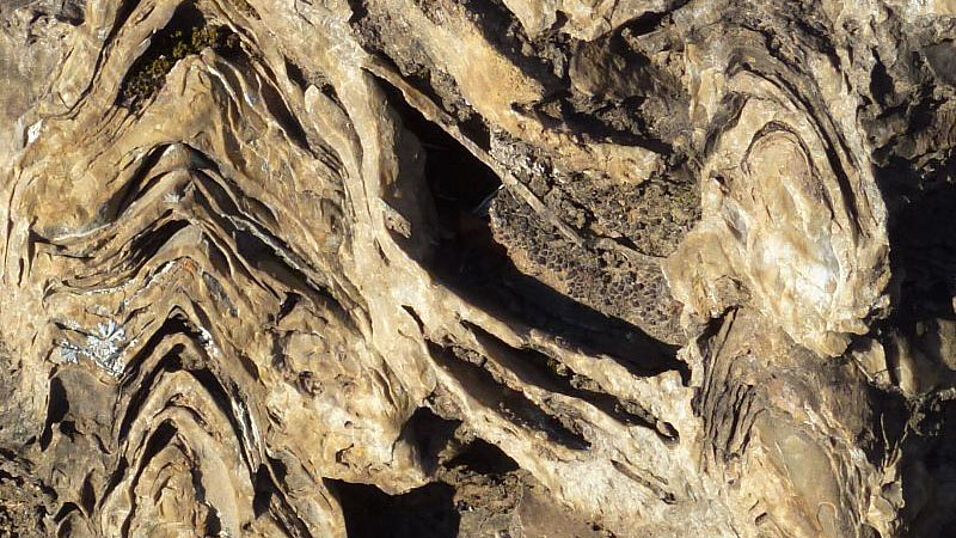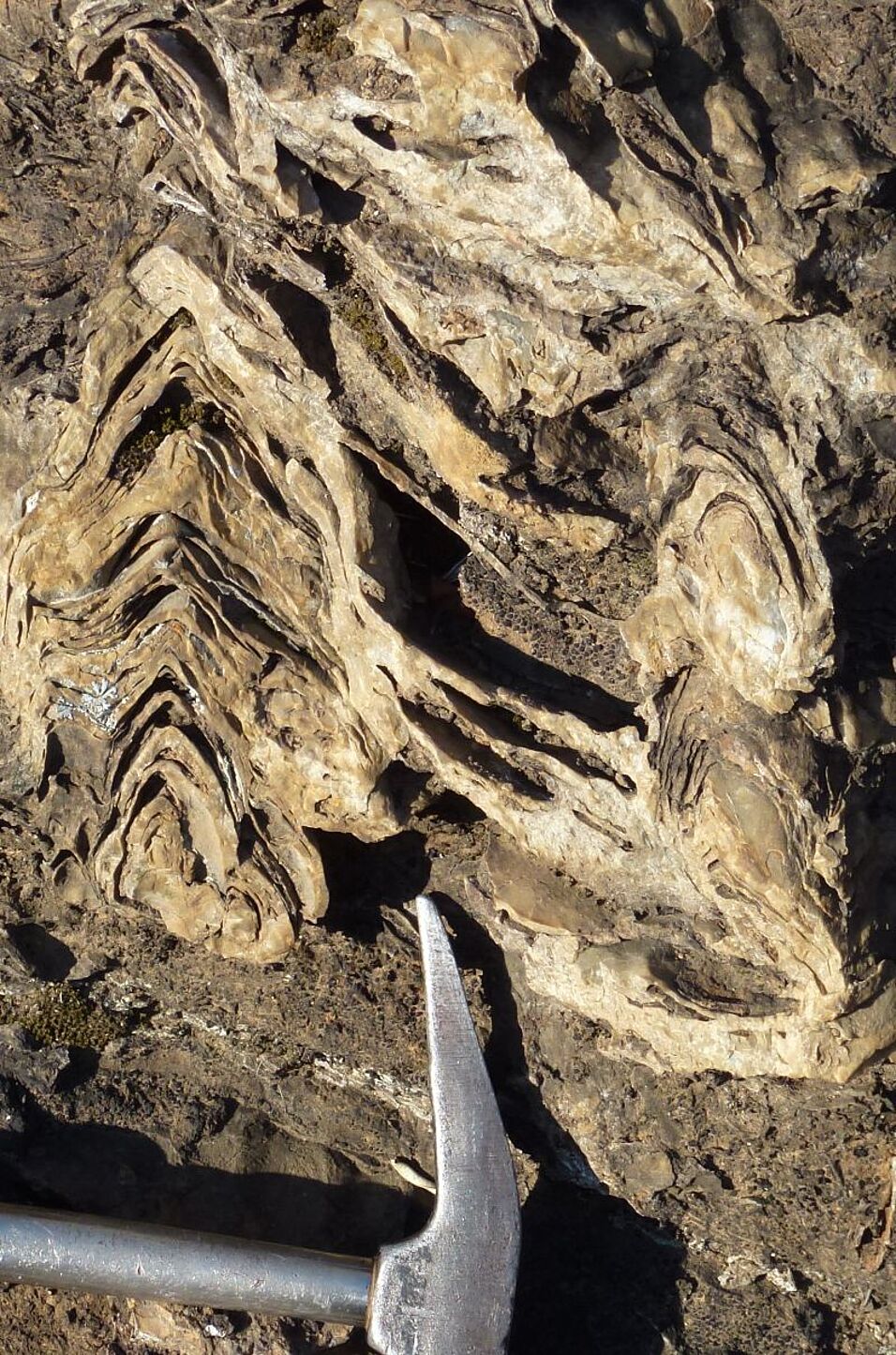The Pilbara stromatolites have been a hot spot for scientific debate in the past years. There is compelling evidence that the appearance of microbial life on Earth is manifested by stromatolites in these 3.43-billion-year-old marine sediments in Pilbara, researchers argue based on recent findings. Others still claim chemical resp. geological processes as forces that led to the sedimentation and aggregation of these structures. “In any case, the processes involved in the mineralisation and preservation of the stromatolites as well as their environment in which they thrived are still incompletely understood”, says Sebastian Viehmann from the Department of Geodynamics and Sedimentology. The postdoctoral researcher will tackle these questions as part of a two-year Horizon 2020 Marie Curie Individual Fellowship in the Research Group of Patrick Meister.
The laminated rock structures were first described about 100 years ago and are addressed as stromatolites. Stromatolites are structures that have been built by mats of microbes binding and cementing grains of sand in shallow seawater. Modern stromatolites present themselves along the western Australian coastline. Living stromatolites are observed to grow as phototrophic laminated microbial mat in hypersaline environments, such as Lagoa Vermelha (Brazil, see image). Over time they become mineralized with calcium carbonate, which allows them to become preserved as stromatolites in the rock record. Fossil stromatolites occur throughout most of the geological record, showing great morphological variety, including dome-shaped, conical and egg-carton-shaped structures. In 2006 researchers around Australian scientist Abigail Allwood defined seven types of Pilbara stromatolites.
Driving forces for lithification
“Mineralisation of these structures is key to preserve them over such a long period of time. However it is still debated whether the Pilbara stromatolites became lithified via early mineralisation from ancient seawater, perhaps influenced by microbes, or abiotically in the hydrothermal processes that might have taken place during or million years after the deposit of the sediment”, says sedimentologist Patrick Meister.
The stromatolites not only show a variety of morphologies, but they are also composed of different mineral phases such as carbonate and silicia. “The time and conditions of formation of individual carbonate and silica phases is still unclear”, Sebastian Viehmann adds, who started his project ELEMIN in April and who will go to Western Australia for sample collection this summer. “We hope to shed light on the question whether the elemental composition of the seawater, in which the stromatolites grew and partially became lithified, was derived mainly from continental weathering or from submarine hydrothermal sources.”
The Pilbara stromatolites are very well preserved compared to other stromatolites from the same geological era and therefore can be regarded as a unique archive for the elemental composition of ancient seawater. “We aim to reconstruct how and when the Pilbara stromatolites became mineralised, to determine the sources of elements in ancient Pilbara seawater and to gain further insight into the environment in which early life on Earth developed”, Sebastian Viehmann says. The researcher will use the latest technology in collaboration with colleagues at the Department of Lithospheric Research to detect and distinguish mineral phases that formed in the stromatolites as early as 3.5 billion years ago. In the different mineral phases he will analyse trace element and radiogenic isotope signatures indicative of the composition of past seawater.
Contact:



